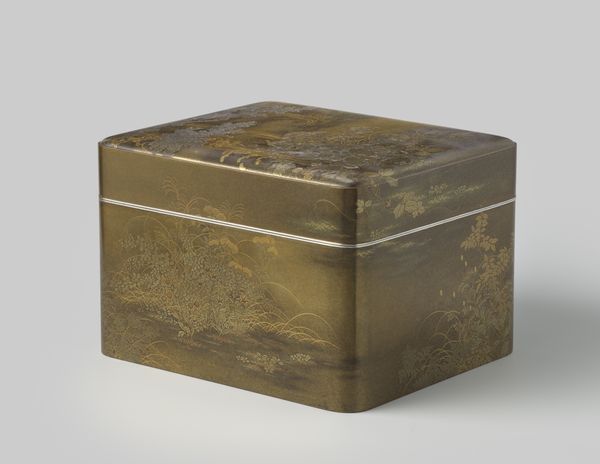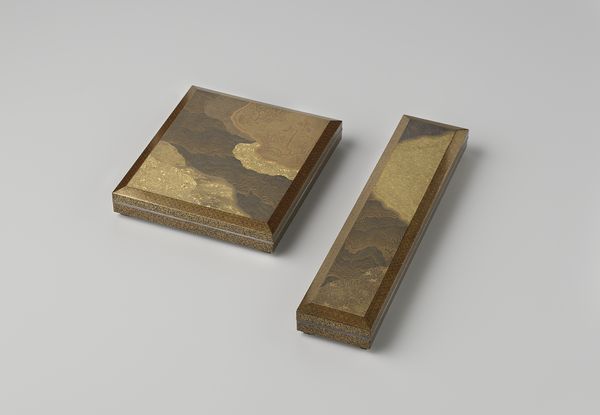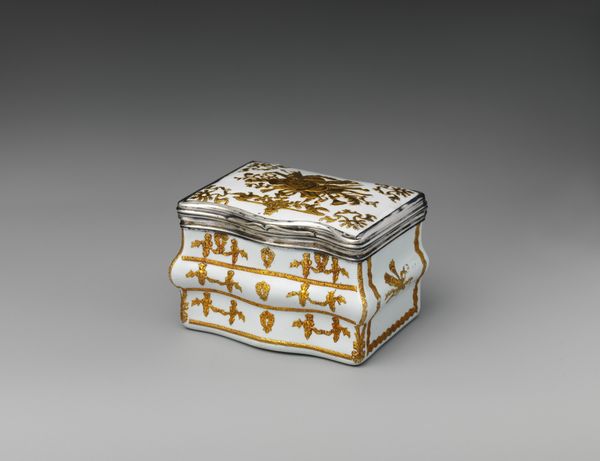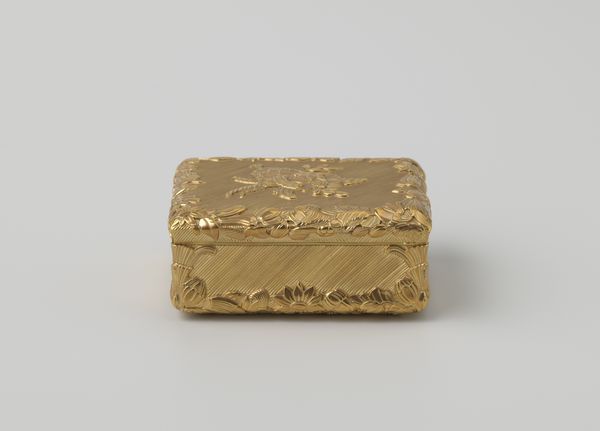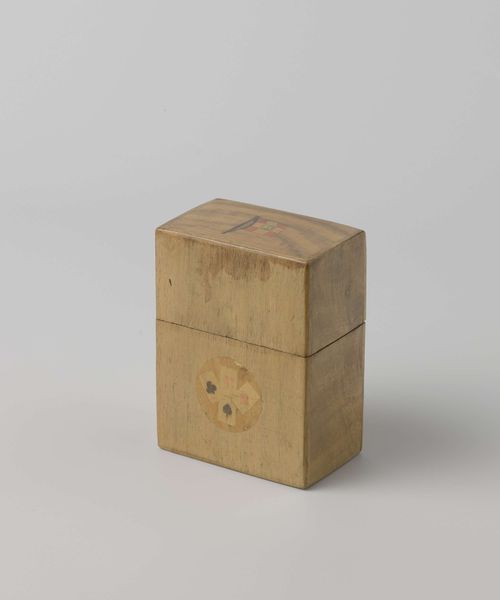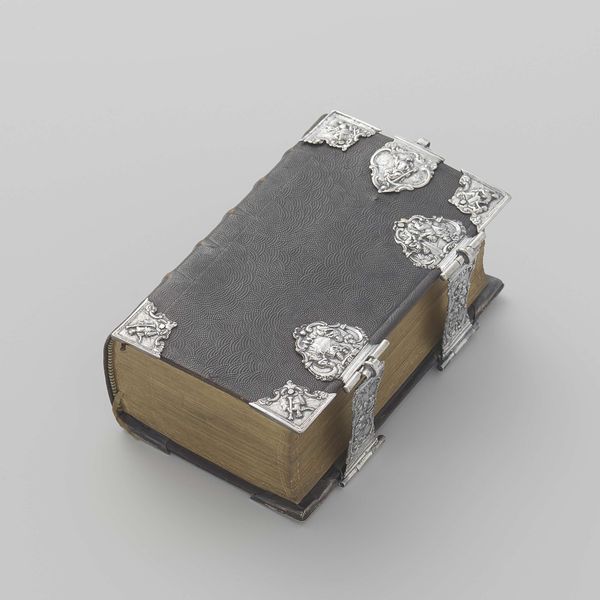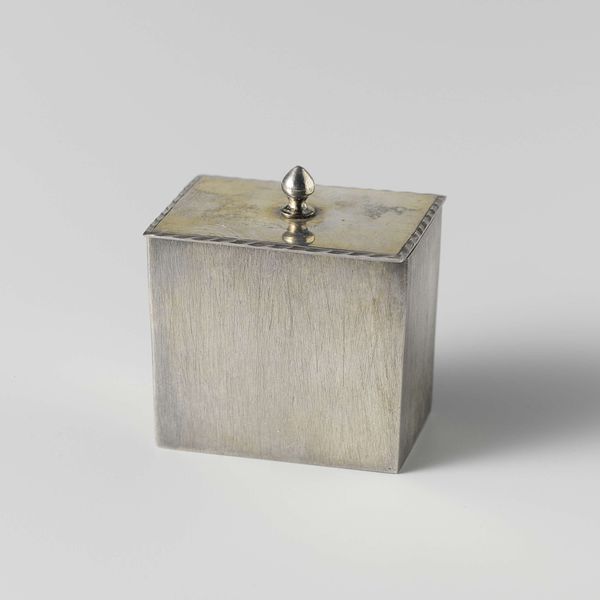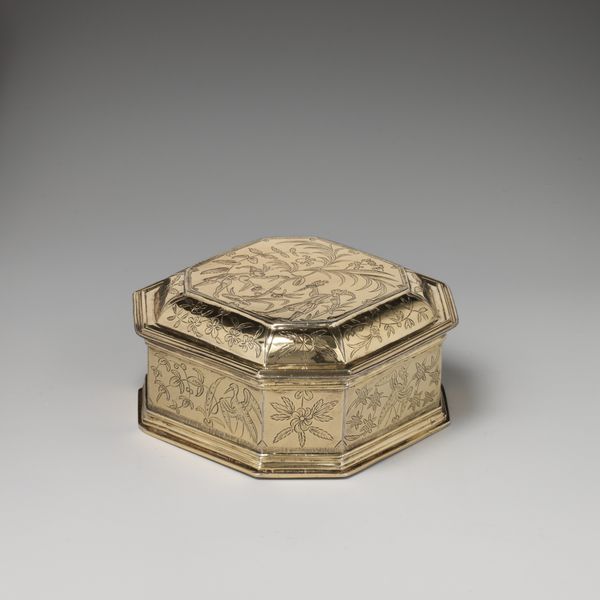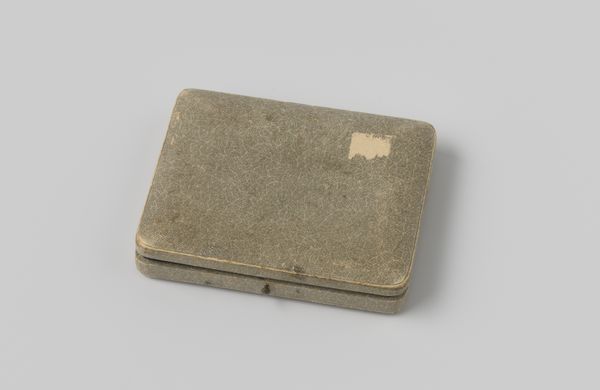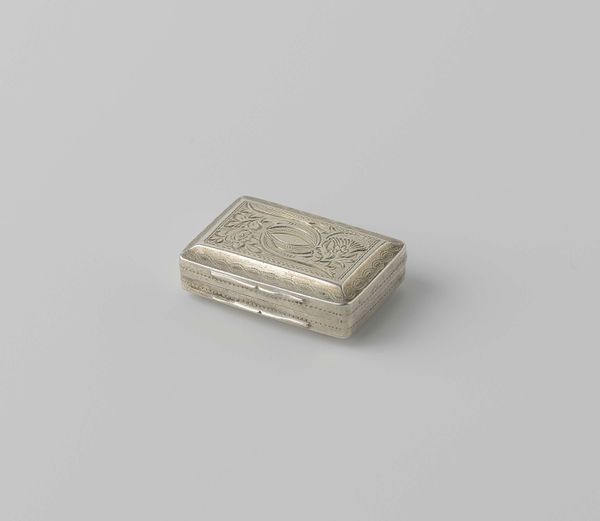
Vierkante doos, met pijnbomen en kersenbloesem in makie op een nashiji-grond 1700 - 1800
0:00
0:00
anonymous
Rijksmuseum
metal
#
metal
#
asian-art
#
landscape
#
geometric
#
decorative-art
#
miniature
Dimensions: height 9.1 cm, length 9 cm, width 9 cm
Copyright: Rijks Museum: Open Domain
Curator: This is a rather wonderful piece from the Rijksmuseum's collection: a square box created sometime between 1700 and 1800. The museum attributes it to an anonymous maker. It features pines and cherry blossoms in maki-e on a nashiji ground. Editor: It’s subtle, isn't it? The miniature landscape in gold against that speckled backdrop. There’s a definite elegance in its geometry. Curator: Elegance cultivated over what must have been considerable labor. Maki-e, sprinkling metallic powder into lacquer, is intensely painstaking. And the nashiji ground, that pear-skin texture, is built up from multiple translucent lacquer layers. This piece speaks of ritualized production, each step adhering to codified traditions of craftsmanship. The metal gives the impression of permanence, doesn't it? A quiet grandeur. Editor: Yes, that controlled craft also played a significant role in a specific culture. A piece like this signals not just wealth but taste, the access to particular artistic skills fostered within a certain society. Its acquisition then signifies that access as power. Curator: Precisely! And given that many such boxes were made for export, often adapted to European tastes while still being produced under strict workshop controls, we can think about this object in the context of trade routes. Was it intended for the Japanese market or further afield? Editor: What would its original purpose have been, beyond the symbolic, as it was integrated into domestic life? These small precious containers served many purposes in elite Japanese households. They often played central roles in intimate ceremonies like tea drinking and were kept nearby for small storage needs. Curator: To see such an object preserved offers insights into artistic transmission. We are privy to seeing these now, generations later in a space of curation. Editor: Indeed, and considering the many hands that would have been part of its creation and those that cherished it in use, before becoming an artifact. It brings a unique cultural depth.
Comments
No comments
Be the first to comment and join the conversation on the ultimate creative platform.
